StarCraft: Remastered is a love letter to fans that's faithful right down to the bugs
Above all, Remastered focuses on preserving a twenty-year-old experience for a devoted community of fans.
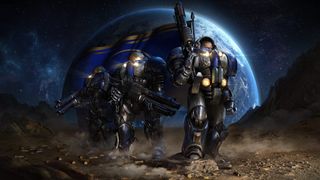

Kwanghee “Waxangel” Woo has covered professional StarCraft since 2002. He used to record professional matches from Korea on videotape and upload them for the international community before this ‘streaming’ thing ever took off.
Photo by Kim Yong Woo.
StarCraft: Remastered, the modern update to Blizzard’s 1998 RTS classic, is set to be released on August 14th. New features include 4K graphics, remastered audio and dialogue, and automated matchmaking—but the game’s design has otherwise remained almost aggressively unchanged. Recently, I got a chance to try out this definitive version of Brood War, and was shocked by how faithful it is.
A short exchange with senior producer Pete Stilwell gave me more insight into StarCraft: Remastered than several hours of actual play. I asked him if he was worried about StarCraft: Remastered’s ability to attract new players to StarCraft. He replied that the team would be content even if zero new players ended up playing.
Above all else, StarCraft: Remastered is for the people who loved the original and kept it alive for the past 19 years. Nearly every aspect of the game is in service to this idea.
SC:R’s graphics are a colossal improvement on StarCraft: Brood War (BW) in technical terms, with a vibrant, 4K world replacing the original's 640x480 limit. However, this upgrade is hard to notice due to Blizzard’s dogmatic approach to preserving the overall look of BW, even as it recreated all the art from scratch. The silhouettes, colors, and animations of the units have been meticulously reproduced, and the updated unit art is often indistinguishable from the original unless viewed next to its pixelated counterpart.
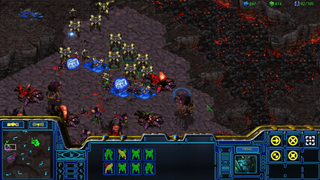
All of the anachronistic restrictions and quirks of the original have been kept intact, from the painfully low unit selection limit to the comically bad pathfinding AI on certain units.
If SC:R’s graphics are a faithful homage, then the gameplay is a near-perfect copy. All of the anachronistic restrictions and quirks of the original have been kept intact, from the painfully low unit selection limit to the comically bad pathfinding AI on certain units. Commonly used bugs and exploits have also been left untouched, accepted now as an integral part of the game.
This commitment to preservation makes the addition of hotkey remapping—a completely trivial feature in any other game—one of SC:R’s most significant changes. Even here, Blizzard is obsessed with adhering to the spirit of the original. Production hotkeys, used to make units and buildings, differed in the various language versions of BW. Thus, rebinding them is considered to be within the spirit of the game, and is allowed in SC:R. On the other hand, hotkeys for unit groupings and camera positions were unchanged in all language releases of BW, and have therefore been placed off-limits.
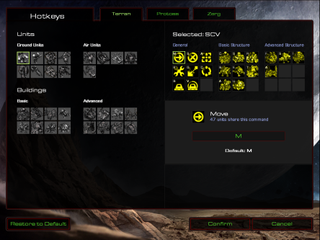
Together, SC:R’s graphics and gameplay offer an experience that’s virtually indistinguishable from BW (a few input kinks for higher-level players remain to be worked out). I had trouble noticing the gorgeous HD graphics beyond the opening phases of a game. Once games started to heat up, the similarities to BW made it too easy for me to become immersed in the fast-paced play that I was so familiar with. During many of my games, I completely forgot that I was playing a different version of StarCraft.
The biggest gaming news, reviews and hardware deals
Keep up to date with the most important stories and the best deals, as picked by the PC Gamer team.
Set in stone
It felt odd playing a game where maintaining the status quo was the primary goal, especially in the current gaming environment where it’s demanded that competitive multiplayer games constantly iterate and change. But as I wondered what a more modernized version of SC:R would be like, I understood that Blizzard had little choice but to make SC:R a historic preservation project.
Stilwell explained how early on in development Blizzard collected opinions from the community (focused on Korea, where BW is most popular) on what direction a potential update might go. From professional gamers to lower-level players who just refused to tire of BW, the message was clear: don’t touch the gameplay. Without any significant changes or intercession from Blizzard, Brood War had already sustained a hardcore fanbase and esports scene for nearly 20 years. Its immutability had long since become a core part of its identity.
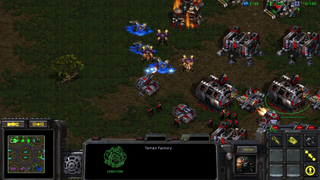
Right now, Brood War is incredibly hard to approach for both new players and veterans trying to get back into the game.
While most of SC:R is devoted to keeping things the same, there are some significant changes that may have a greater effect than any theoretical change to balance. Ironically, these were features that I had no way to test or preview: automated matchmaking and a revamped competitive ladder.
Right now, Brood War is incredibly hard to approach for both new players and veterans trying to get back into the game. I remember visiting Korea a few years ago and going to a PC Bang (net cafe) with an old friend to relive the good ol’ days of playing 2v2 in middle school. Just to play some casual games, we had to go through the cumbersome process of configuring third-party programs, connecting to a private server, and repeatedly making game lobbies until opponents finally joined. My friend insisted it was the only way we could play a decent match.
Lowering the barrier to entry in the most direct sense—by letting people actually play the game without jumping through hoops—could be the single best thing that’s happened to StarCraft in over a decade. Without alienating its hardcore players, it makes StarCraft more accessible to newcomers who are intrigued by its long-standing reputation as both a brutally challenging game, and as the originator of modern esports.
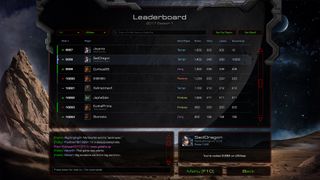
Attracting new players is crucial for sustaining Brood War in the long term, and in a best-case scenario, even helping it grow.
There’s nothing that points to an imminent collapse for BW; it’s actually experiencing a mini-revival at the moment. Yet, it’s undeniable that the competitive Brood War scene has aged significantly, with most of the top players being progamers with nearly a decade of playing experience. Attracting new players is crucial for sustaining Brood War in the long term, and in a best-case scenario, even helping it grow.
Stilwell and head designer Matt Morris made it clear that SC:R was no one-shot project, and that the game would continue to be supported going forward. When I asked them about possibly making more aggressive changes catering to new players, they were cautiously open to the possibility, depending on feedback from the existing community.
The official announcement of SC:R last March was intriguing, in that the possibility of change opened the floodgates for all sorts of opinions from a previously stolid community. There were fans who wanted the game to soften up its brutal difficulty, those who wanted minor balance tweaks, and a contingent that looked at SC:R as a “do-over” for StarCraft 2. Right now, these are all minority voices. It will be interesting to see if two or twenty years down the line, those attitudes will change.
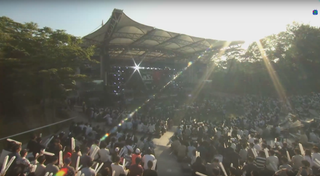
StarCraft: Remastered is the right game at the right time, arriving as a loving tribute to StarCraft: Brood War as it experiences a second renaissance in Korea. Tradition and modernity are often at odds, but Blizzard has balanced the two admirably. StarCraft: Remastered enshrines a masterpiece, while at the same time making it as accessible as ever to all those who want to make the pilgrimage.
Most Popular

